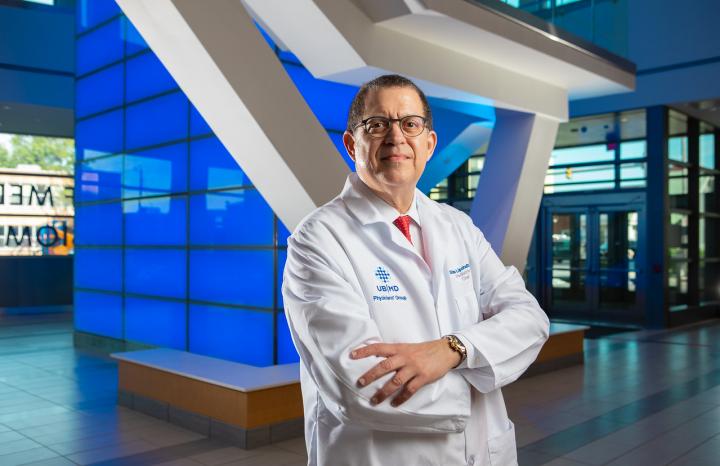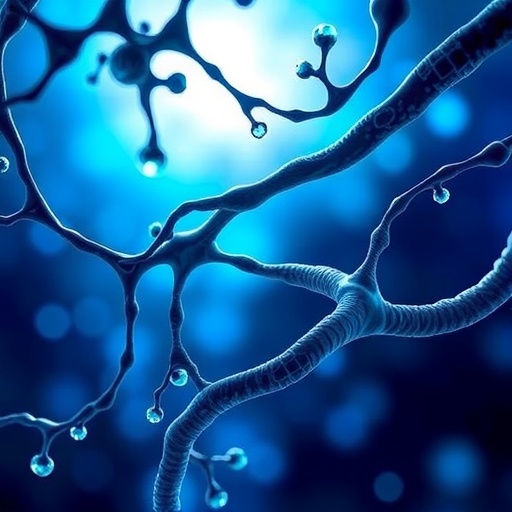Routine genetic screening for all children with cardiomyopathy could make a powerful difference in outcomes and even survival

Credit: Douglas Levere/University at Buffalo
BUFFALO, N.Y. — A national, University at Buffalo-led study on genes in pediatric cardiomyopathy demonstrates strong evidence for routine genetic screening in children with the disease. The study, published April 28 in the Journal of the American Heart Association, revealed wide variation in screening, with some centers conducting routine genetic testing and others conducting none.
Conducted at 14 centers, the National Institutes of Health-funded study of 152 children with cardiomyopathy found that only half had undergone genetic screening. Of those who hadn’t undergone screening, 21% were found to have a genetic cause for the disease after undergoing genetic testing as part of the research study.
“Even in families without a family history of cardiomyopathy, we found that many children with cardiomyopathy have a genetic cause that we can establish,” said Steven E. Lipshultz, MD, the study’s senior author and principal investigator and A. Conger Goodyear Professor and Chair of the Department of Pediatrics in the Jacobs School of Medicine and Biomedical Sciences at UB.
First author on the paper is Stephanie M. Ware, MD, PhD, of the Indiana University School of Medicine.
The study’s findings are of critical significance for treating and potentially curing this rare, sometimes fatal, pediatric disease. “We had assumed that many of the life-threatening cardiomyopathies in children resulted from genetic mutations,” explained Lipshultz. “This research confirms that assumption. When we know the cause, we can more effectively treat, and in some cases even cure, these children with therapies targeted to the specific mutation causing their disease.”
Screening can save lives
Genetic screening could provide critical, lifesaving information to families, Lipshultz said.
“Since some mutations are associated with rapidly progressive fatal outcomes, genetic screening could allow children with these mutations to be identified and prioritized for a lifesaving cardiac transplant,” he said.
Information about which mutation may be involved in a patient’s disease can also make a significant difference in the type of treatment prescribed, and the outcome. Lipshultz noted that he and his colleagues have published research demonstrating that children whose cardiomyopathy results from certain mutations that cause heart failure will deteriorate and even die if treated with therapies commonly prescribed for heart failure.
“This is because those therapies push the child’s genetically impaired mitochondria to work harder,” said Lipshultz. “This, tragically, can hasten the demise of these children. But by knowing that these types of mutations are present, alternative therapies that preserve and protect mitochondrial function can be employed. This is one of many examples where knowing the genetic cause of cardiomyopathy could make the difference between the life or death of a child.”
The study also identified novel gene mutations associated with cardiomyopathy.
Genetic screening varies widely
Although the study was conducted at major children’s hospitals with well-established cardiomyopathy programs, only some of them used genetic screening as a routine part of clinical care. Nationally, a minority of children and their families with cardiomyopathy have the opportunity to undergo genetic screening, a fact that Lipshultz and his co-authors hope this study will begin to change.
UB, for example, is one of only 40 cardiomyopathy centers in the world that have been critically and rigorously reviewed and certified as a recognized Cardiomyopathy Center of Care by the Children’s Cardiomyopathy Foundation for providing high-quality cardiac care and specialized disease management to children with cardiomyopathy. (This study also received funding from the Children’s Cardiomyopathy Foundation.) At UB and the John R. Oishei Children’s Hospital, resources from federal and private sources are providing additional funding for more research and clinical care in pediatric cardiac clinical genetics, as well as genetic counseling.
Lipshultz added that, unfortunately, most children with the disease are not cared for in these specialized centers.
“One hurdle is having cardiologists and geneticists interested in ordering these genetic tests and then counseling the families about the results,” he said. “The testing for the most common gene mutations associated with cardiomyopathy can be done pretty much anywhere, since laboratory companies provide the kits for collected patient samples.”
The study supports existing clinical guidelines for pediatric cardiomyopathy, but, Lipshultz pointed out, these are not widely followed. “Our results show that with routine clinical judgment, a high percentage of children with genetic causes for their cardiomyopathy are missed,” he said, adding, “If you don’t look, you don’t know.”
The results also provide additional evidence for cardiac surveillance, where all immediate family members of a child with cardiomyopathy and an associated gene mutation are screened to find out if they, too, have the same mutation and cardiomyopathy.
At a time when gene-specific targeted therapies are increasingly possible, which can optimize care and planning, the failure to genetically screen these patients is no longer defensible, Lipshultz said.
Exome sequencing
In the study, the researchers performed whole exome sequencing on a large number of children with cardiomyopathy. Whole exome sequencing is a much more comprehensive way to identify gene mutations than simply searching for the six or eight most common mutations known to be associated with cardiomyopathy, Lipshultz explained.
“With whole exome sequencing, a much broader range of pathologic mutations are able to be identified, and novel new mutations that may be associated with cardiomyopathy can be identified,” he said.
###
Lipshultz is an international leader whose research has led to major evidence-based improvements in the treatment of patients with pediatric cardiomyopathy and related diseases. In addition to his role with the Jacobs School at UB, Lipshultz serves as pediatric chief-of-service at Kaleida Health, medical director of pediatric services business development at John R. Oishei Children’s Hospital, and president of UBMD Pediatrics.
Ware is a professor of pediatrics and medical and molecular genetics at Indiana University, where she is also vice chair of clinical affairs in medical and molecular genetics, and program leader in cardiovascular genetics at the Herman B. Wells Center for Pediatric Research.
In addition to Ware and Lipshultz, other co-authors from the Pediatric Cardiomyopathy Registry Study Group are from UB; Vanderbilt University; University of Tabuk; Harvard University; New England Research Institutes; Washington University, St. Louis; Einstein College of Medicine; University of Colorado; University of Southern California; Columbia University; University of Tennessee; University of Pennsylvania; Northwestern University; University of Miami; University of Utah; University of Cincinnati; and Wayne State University.
Media Contact
Ellen Goldbaum
[email protected]
Related Journal Article
http://dx.




